8 Hurricane-Resistant Landscaping Ideas for Tallahassee, FL
BY KIMBERLY MAGERL | APRIL 12TH, 2023 | FLORIDA, LAWN CARE, TALLAHASSEETallahassee is nestled in the Florida panhandle between Jacksonville and Pensacola, 22 miles from the Gulf of Mexico and its pristine sandy beaches. This cultural city recognizes the power and destruction of hurricanes, even without a front-seat ocean view. Hurricane-force winds impact cities as far as 150 miles inland, wreaking havoc on your Tally lawn. Here are some hurricane-resistant landscaping ideas to help you prepare your outdoor space for hurricane season.
In this article, we’ll cover:
8 Hurricane-Resistant Landscaping Ideas for Tallahassee
- Plant Wind-Resistant Trees
- Create a Network of Trees
- Use Native Plants
- Perform Maintenance
- Soft Mulch Your Garden Beds
- Install Wind-Resistant Fencing
- Eliminate Hazards
- Clear Drains
FAQ About Hurricane-Resistant Miami Landscaping
8 Hurricane-Resistant Landscaping Ideas for Tallahassee
1. Plant Wind-Resistant Trees
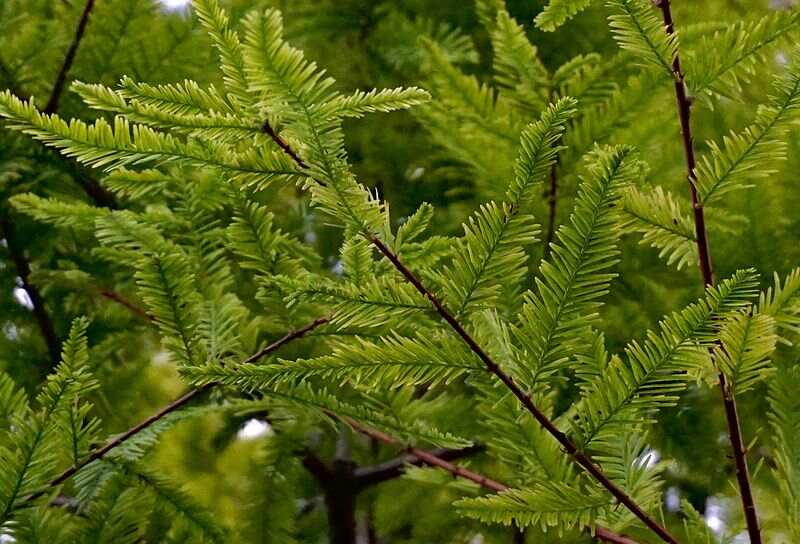
Photo Credit: Treeworld Wholesale / Wikimedia Commons / CC BY 2.0
Sustained winds of 90 mph or more will uproot large trees. Even 20 miles from the nearest coast, Tallahassee is no stranger to tropical storm winds during hurricane season. The city endured 12 hours of hurricane-force winds and gusts up to 71 miles per hour when Hurricane Michael ripped across the Gulf of Mexico in 2019.
With 41% of all U.S. hurricanes making landfall in Florida, it is important to plant wind-resistant trees to protect your home and neighborhood from flying branches and falling trees.
Wind-resistant Tallahassee tree species include:
- American Holly (Ilex opaca)
- Bald Cypress (Taxodium distichum)
- Crapemyrtle (Lagerstroemia indica)
- Red Maple (Acer rubrum)
- Sabal Palm (Sabal palmetto)
- Sand Live Oak (Quercus geminata)
- Southern Magnolia (Magnolia grandiflora)
Trees to avoid:
- Chinese Elm (Ulmus parvifolia)
- Golden Trumpet Tree (Tabebuia chrysotricha)
- Norfolk Island Pine (Araucaria heterophylla)
- Pecan (Carya illinoinensis)
- Queen Palm (Syagrus romanzoffiana)
- Water Oak (Quercus nigra)
- Weeping Fig (Ficus benjamina)
Advantages of wind-resistant trees:
- Thin leaves and slender branches deflect wind
- Flexible branches bend instead of snap
- Broad and deep root systems reduce the risk of uprooting
- Low centers of gravity create stability
Estimated cost: The average cost of a hurricane-resistant tree varies depending on the size and type of tree, purchase location, and whether you are having a certified arborist handle your landscaping. If you head to your local nursery to purchase your tree, you can expect to spend between $200 to $1,500 per tree.
2. Create a Network of Trees
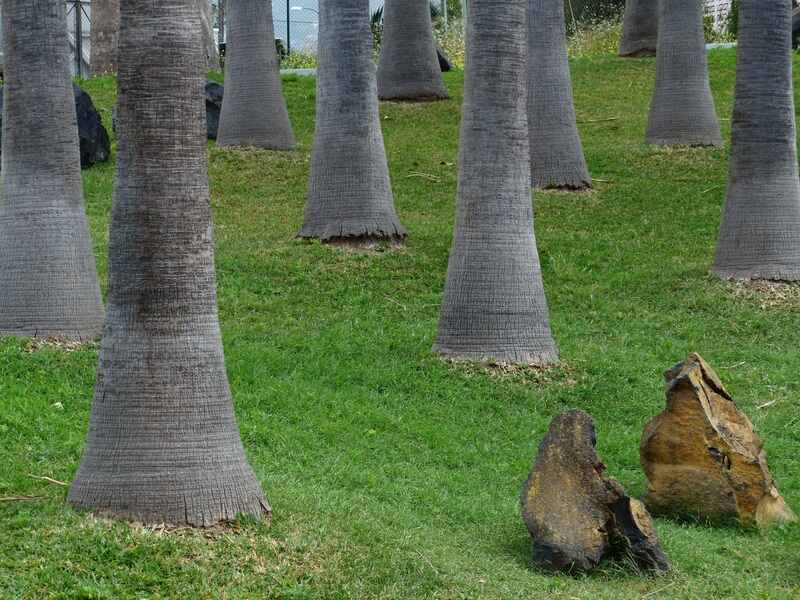
Photo Credit: Pxhere
Storm preparedness and emergency management are second nature to most residents of Leon County. Unfortunately, no matter how much you plan, you know there is no way to completely protect your home and yard from high winds and storm damage. Selecting wind-resistant trees and thoroughly planning your landscape design increases your plants’ survival chances during a storm surge.
Some things to consider as you plan your hurricane-resistant landscape include:
- Flood tolerance
- Mature size to avoid conflicts with fences, buildings, power lines, and other plants
- Removing problematic plants or trees
- Planting trees in groups and at even intervals to form a stabilizing root network
3. Use Native Plants
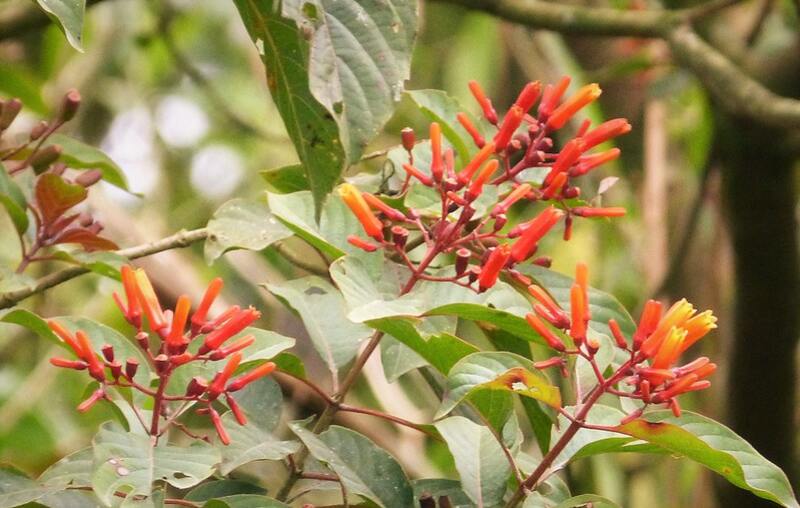
Photo Credit: gailhampshire / Flickr / CC BY 2.0
Tally sits in the central portion of the Northern Florida panhandle. Native plants are the most salt and wind-tolerant plants you can include in your landscaping, and they are incredibly low-maintenance. Native plants promote a healthy ecosystem and thrive in Tallahassee’s subtropical climate. These plants are hands-off, resistant to local insects and diseases, and more likely to survive flooding from a hurricane churning in from the Gulf.
There are many Tallahassee native plants to choose from. Take a look at some of the most wind-tolerant examples:
- Bougainvillea (Bougainvillea glabra)
- Fakahatchee Grass (Tripsacum dactyloides)
- Firebush (Hamelia patens)
- Gaillardia (Gaillardia pulchella)
- Muhly Grass (Muhlenbergia capillaris)
- Sea Myrtle (Baccharis halimifolia)
- Sweet Acacia (Vachellia farnesiana)
Advantages of native plants:
- Thrive in Tallahassee’s subtropical climate and fine sandy loam soils
- Support a diverse ecosystem, providing food and shelter for local wildlife, hummingbirds, butterflies, and other pollinators
- Require less water and fertilizer
- Disease and pest-resistant
- Wind and salt-tolerant
Estimated cost: Native plant prices vary widely based on many factors, including type, size, and location. On average, you can expect to spend between $15 to $50 per shrub, $5 to $50 per vine, and $200 to $1,500 per tree.
4. Perform Tree Maintenance
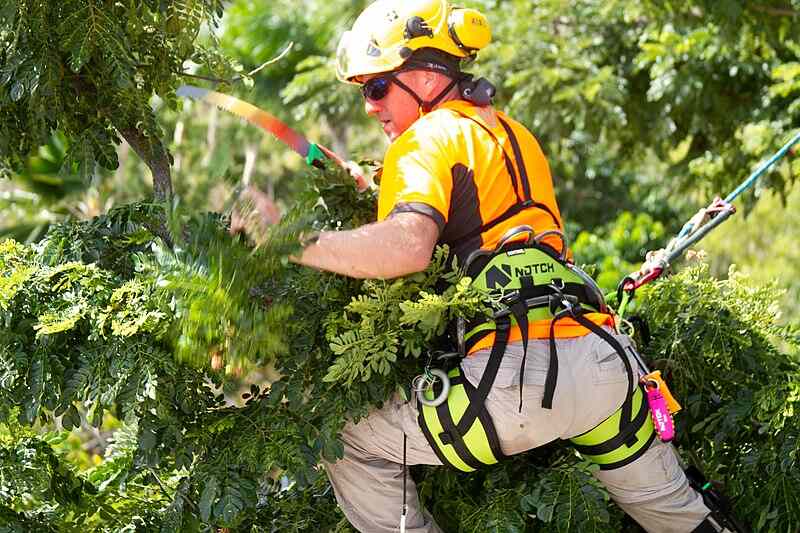
Photo Credit: TreeMinion15 / Wikimedia Commons / CC BY-SA 4.0
Tallahassee residents get to experience the enviable Florida weather and a short 30-minute drive to sugary white beaches. They also have the added advantage of being inland away from most storm surges during a hurricane, and hurricanes only directly impact Tally once every eight years on average.
Still, healthy trees are sturdy trees, and one of the best ways to maintain healthy trees is to perform routine maintenance, including pruning and trimming. Be sure to keep your hedges, shrubs, and trees pruned or trimmed to cut down on the number and size of branches flying across your yard during a tropical storm.
Advantages of landscape maintenance:
- Reduces the risk of loose branches and tree limbs
- Increases the health of your landscape
- Encourages strong and healthy root systems
Estimated cost: Professional tree trimming and landscape maintenance costs between $315 to $700, depending on the size of your yard and the number of trees and shrubs.
5. Soft Mulch Your Garden Beds
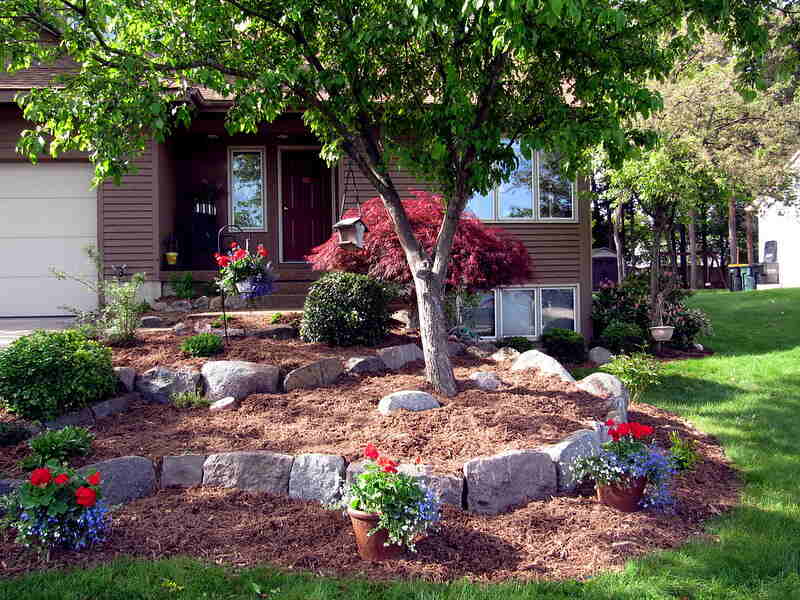
Photo Credit: Rachel Kramer / Flickr / CC BY 2.0
Mulch is an inexpensive DIY job with enormous benefits for your Florida lawn. Mulch comes in many forms and colors. It is a loose material typically made of organic matter like compost, tree bark, and wood chips that helps reduce weeds, conserve moisture, and protects your plants’ roots from heat.
Organic mulch is the best option for your Tallahassee landscape. It adds beneficial nutrients to the sandy loam soil as it decomposes, but you will need to add a fresh layer annually. Organic mulch absorbs water, prevents puddling, decreases runoff, and assists in flood management.
Inorganic mulches like gravel, river rock, and landscape glass are low-maintenance and durable, but the hard pieces ricochet off windows and siding during a hurricane.
Best mulch for your Tallahassee landscape:
- Hardwood and softwood chips
- Bark
- Pine needles
- Leaves
- Grass clippings
Mulch to avoid:
- Rock, stone, lava rock
- Rubber mulch
- Landscape glass
Advantages of mulch:
- Increases moisture retention
- Protects plant roots from extreme heat
- Reduces weeds
- Adds curb appeal
Estimated cost: According to Lowes and Home Depot, wood mulch costs between $3 to $5 per 2-cubic-foot bag. If your landscaping project requires a lot of mulch, you can often purchase it in bulk to save money.
6. Install Wind-Resistant Fencing
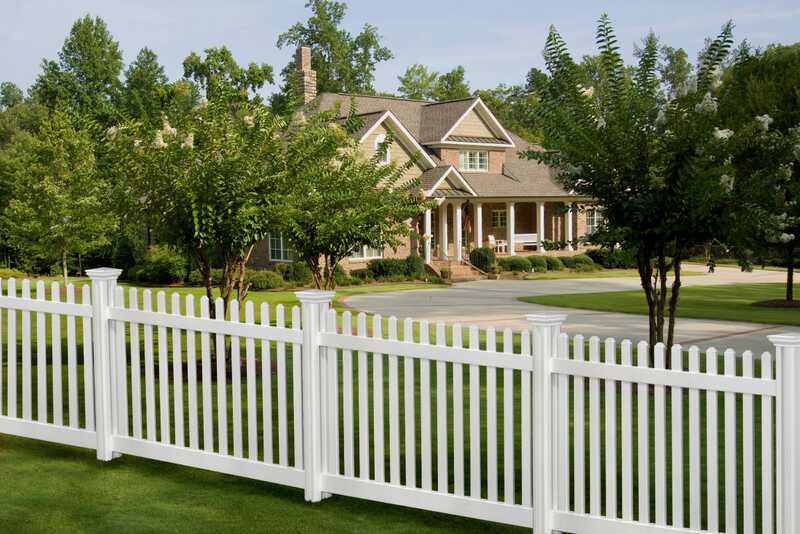
Photo Credit: Deniseesser / Wikimedia Commons / CC BY-SA 3.0
Many Tallahassee fence contractors specialize in wind-resistant fencing and reinforcement. Like trees, all fences are not created equal, especially for wind resistance. It is important to consider the best type of fencing for your landscape and note that wood fences are not the best choice for wind-resistant fencing. However, if the sustainability and natural beauty of wood are something you cannot live without, be sure to choose a slatted fence design to minimize wind resistance.
Take a look at some of the most wind-resistant fence types:
- Chain-link
- Aluminum
- Vinyl
- Masonry
Fence types to avoid:
- Wood
- Any type of solid privacy fence
Estimated cost: Professional fence installation costs between $1,330 to $5,550, depending on size, materials, and location.
7. Eliminate Hazards
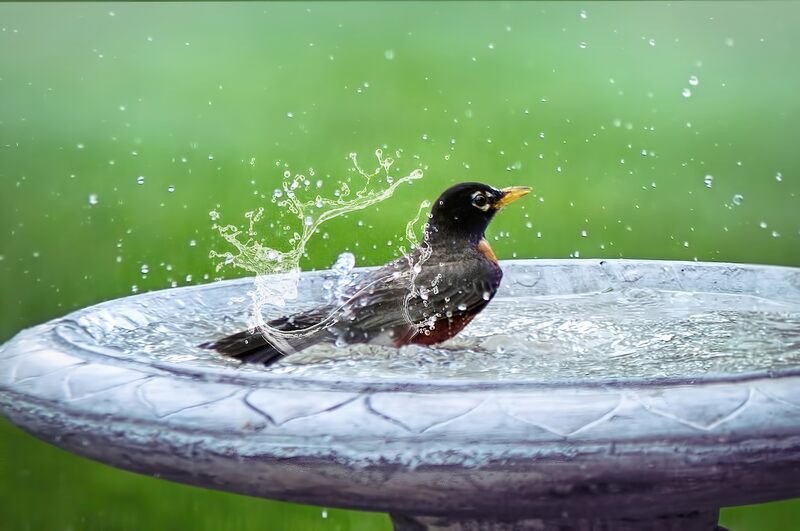
Photo Credit: Pixabay
The average Florida homeowner spends 37.7 days mowing in their lifetime. That is a lot of time outdoors, which comes as no surprise considering the year-round warm weather. Statues, flower containers, bird baths, small fountains, and patio furniture are all great additions that add a personal touch and visual appeal to your Tallahassee landscape. Unfortunately, these objects are no match for hurricane-force winds. Be sure to remove all movable storm hazards to minimize damage.
Estimated cost: There is no cost to move your landscaping decorations or furniture indoors. However, if you are short on space and want to maximize your storm preparedness, you can rent a storage unit for around $125 per month.
8. Clear Drains
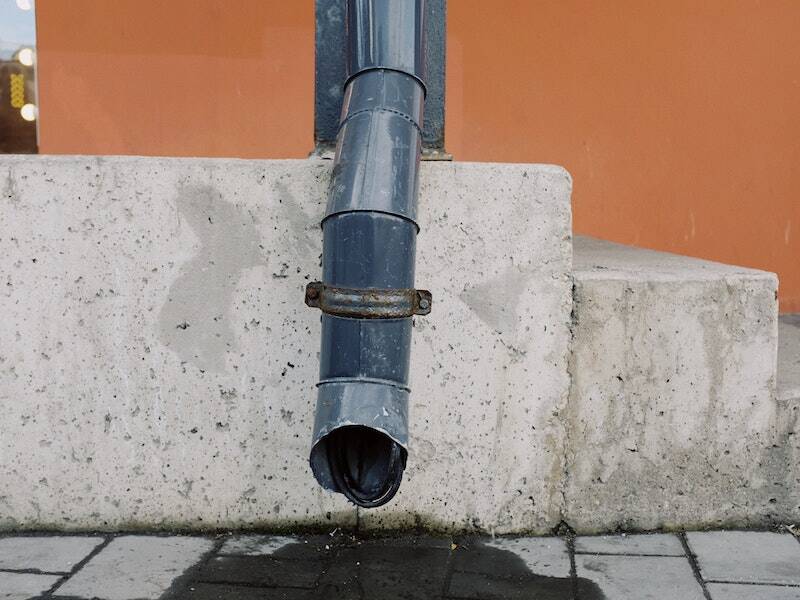
Photo Credit: Pexels
Tallahassee receives 60 inches of rain per year, and Leon County’s unique topography, including streams, rivers, lakes, and wetlands, is susceptible to overland flooding. Storm drains are an integral part of your overall landscape. Unfortunately, many homeowners often overlook these necessities because they offer little aesthetic value. Yard waste and organic debris clog your drains, leading to increased flooding and water damage. Be sure to keep paths to your drains clear by maintaining your landscape.
Advantages of proper drainage:
- Prevents water buildup
- Reduces erosion
- Reduces toxic runoff
Estimated cost: Professional French drain installation costs between $1,650 to $12,250, depending on location, size, and excavation needs.
FAQ About Hurricane-Resistant Tallahassee Landscaping
The best hurricane-resistant grasses for your Tallahassee landscape are bermudagrass and Zoysiagrass. Both types of grass tolerate submergence and are great warm-season grasses that also stand up well to heavy traffic.
Yes. Most artificial grass is wind-resistant and can withstand up to 50 inches of rain per hour. Most hurricanes generate precipitation at a rate of 6 inches per hour.
Mow regularly once the ground is completely dry. Aim to mow weekly to stimulate grass growth. Be sure to set your mower to the tallest setting to help your grass establish deep roots, making it more flood and drought resistant.
Professional Tallahassee Landscape Maintenance
Check hurricane-resistant landscaping off of your storm preparedness list. While you focus on other areas of preparation, consider letting Wikilawn connect you with a local landscaping company that can handle your lawn care needs.
Main Image Credit: Tallahassee FL Park Ave / Ebyabe / Wikimedia Commons / CC BY-SA 3.0